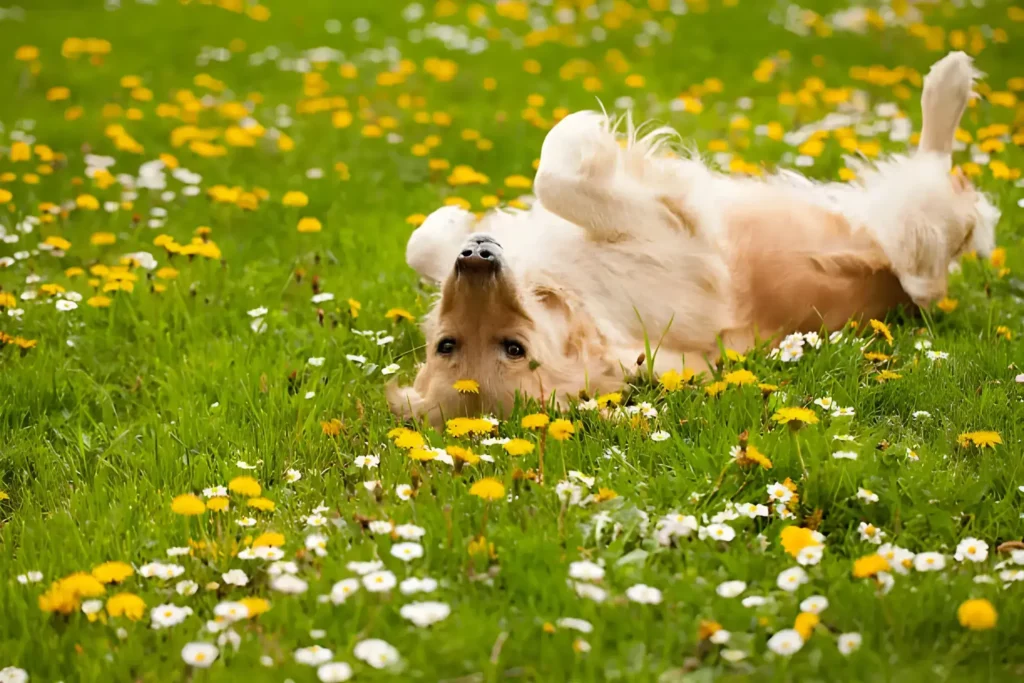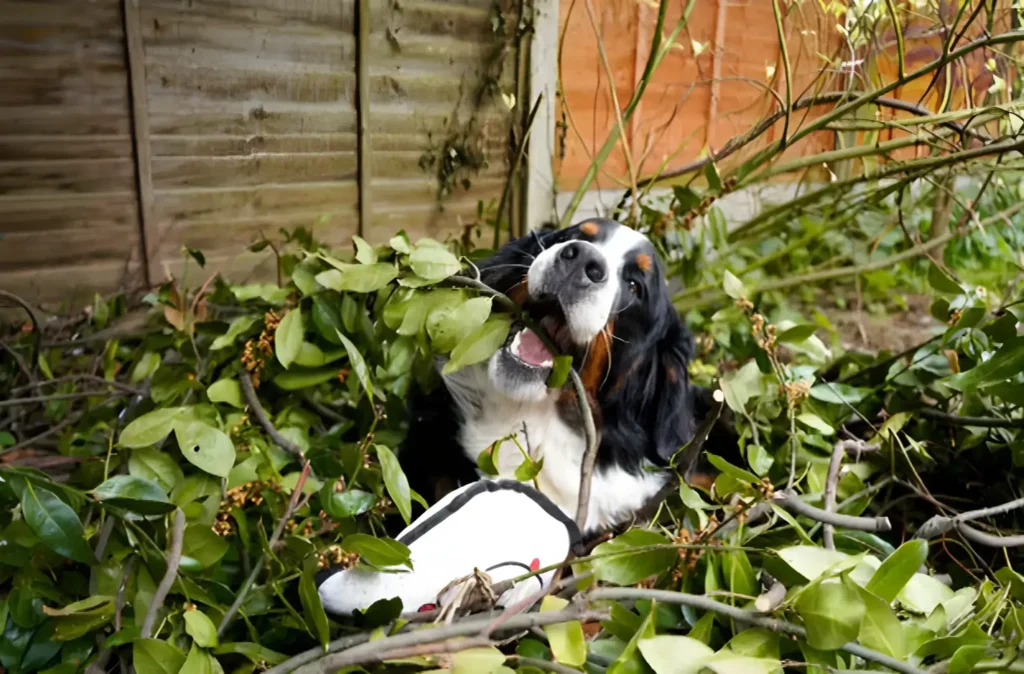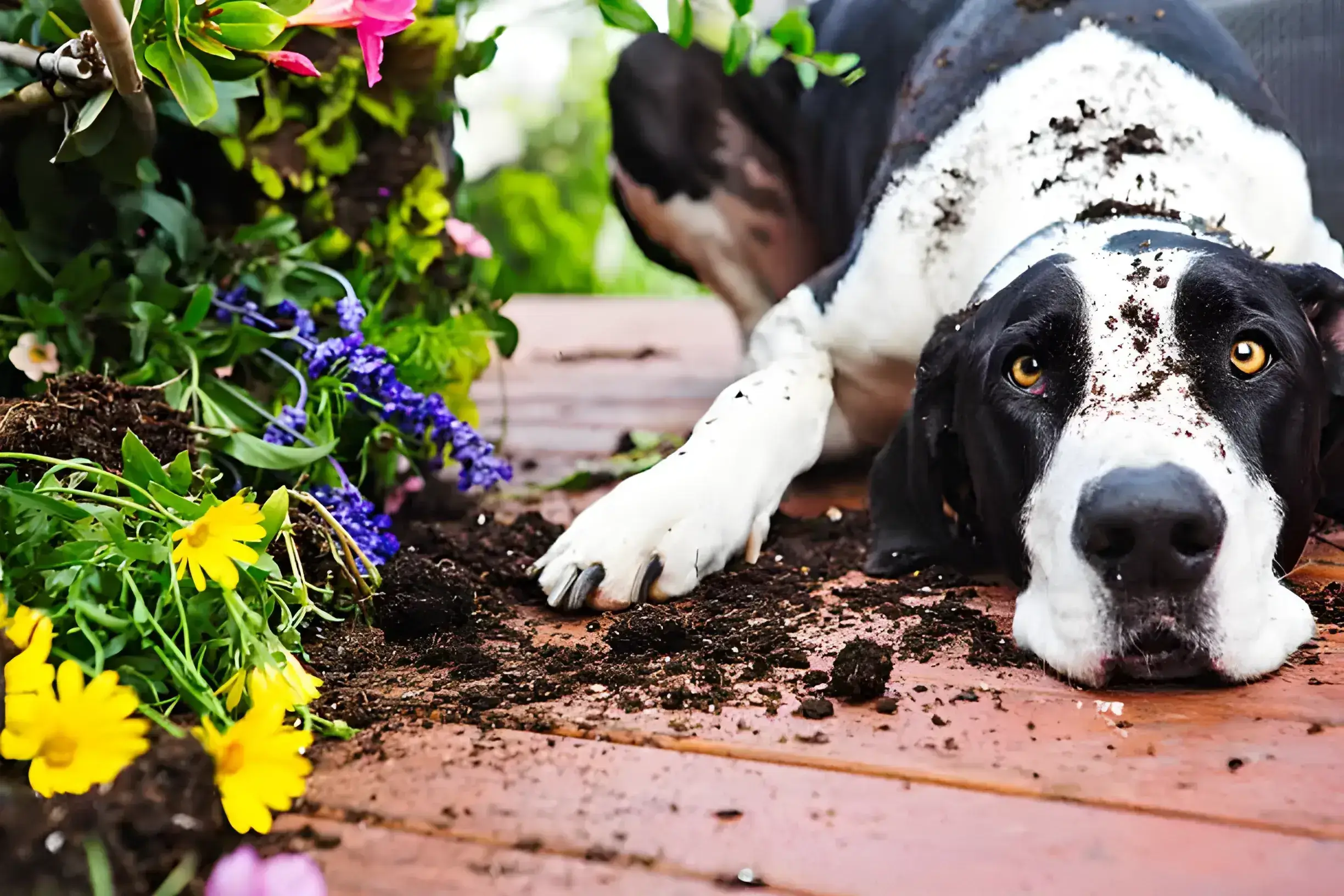Your dog loves digging in your garden and munching on plants, but the plants don’t love it back. Here’s how to create a peaceful truce between your furry friend and your green space.
Understanding Why Your Dog Loves the Garden
Before tackling the problem, understand what’s luring your dog in:
- Boredom: Dogs need exercise and mental stimulation. A garden can seem like a giant playground.
- Instinct: Digging and chewing are natural behaviors for many breeds.
- Attention: Even negative attention is still attention to a bored pup.
- The Thrill of the Chase: Squirrels, birds, or other critters make the garden seem irresistible.
Solutions: A Humane Multi-Pronged Approach
1. Physical Barriers:
- Fencing: This is the most reliable deterrent. Choose height and style based on your dog’s size and jumping ability. Consider decorative options for visual appeal.
- Raised Beds: Create a clear division that’s harder for your dog to reach.
- Landscaping Edging: A smaller barrier that’s effective against little diggers.
- Chicken Wire (Temporary): Useful around seedlings, but not a permanent solution.
2. Scent and Taste Repellents:
- Citrus: Orange peels or essential oil sprays repel most dogs.
- Vinegar: Diluted white vinegar sprayed around the garden perimeter can be effective.
- Spices: Sprinkle cayenne pepper or chili powder for a nose-tingling deterrent (avoid if your dog licks its paws).
- Commercial Repellents: Opt for pet-safe, natural formulas.
3. Training and Distraction
- “Leave It” Command: Teach your dog a strong “leave it” or “off” command for the garden area.
- Designated Play Zone: Create a dog-friendly digging spot with sand or loose soil. Hide toys here!
- Exercise & Enrichment: Tired dogs are less destructive. Walks, games, and puzzle toys help.
4. Proactive Garden Design
- Plant Strategically: Choose dog-resistant plants (lavender, lamb’s ear) or prickly varieties to discourage interest.
- Mulch Matters: Rough mulch like pine needles can be a natural deterrent.
Important Things to Remember

- Combination Approach: The best results come from multiple strategies used together.
- Supervision: Especially with young dogs, always supervise them in the yard.
- Safe Repellents: Never use anything that could be harmful to your dog.
- Consistency: It takes time and patience to change your dog’s habits.
Troubleshooting Guide
Problem: My dog jumps the fence, digs under the fence, evades repellents, or seems unfazed by deterrents.
Solution:
- Jumping: Increase fence height, add lattice for climbing difficulty, or consider a motion-activated sprinkler to surprise escape artists.
- Digging: Ensure buried fencing extends underground to prevent tunneling. Provide a designated digging pit outside the garden area.
- Repellent Ineffectiveness: Rotate repellent types to avoid scent adaptation. Test an area unseen by your dog to ensure the strength isn’t making them sneeze excessively (unpleasant but potentially ineffective).
Success Stories
Max the Mischievous Mutt: “Max used to destroy my flowerbeds every spring. A combination of citrus spray, a designated digging area with chew toys, and more playtime has made him a garden angel!” – Sarah H., California.
Pepper the Persistent Pug: “Pepper thought the garden was her personal salad bar. Training her “leave it” command and planting lemongrass around the perimeter has done wonders!” – David L., Texas.
Dog-Friendly Garden Design

Safe Plants: Choose from a variety of beautiful, dog-safe plants like marigolds, petunias, or hollyhocks.
Dog Zone: Designate a specific area within the garden for your dog, with shade, water access, and a comfortable resting spot.
Dog Paths: Create designated pathways using dog-friendly materials like gravel or mulch to channel their running and exploring within the garden.
Beyond the Garden: Deterring Dogs Indoors
Houseplants: Opt for dog-safe houseplants or place existing ones out of reach on high shelves or plant stands.
Furniture Protection: Cover couches and beds with throws or use taste-deterrent sprays on areas your dog tends to chew.
No Couch Zones: Train your dog with commands like “off” to stay off furniture you want to protect.
Fun Alternatives To Garden Destruction
Flirt Poles: These are great for mimicking chase play in a controlled way, burning energy to reduce garden interest.
Snuffle Mats: Hide treats in a snuffle mat for mental engagement and foraging instincts, diverting from garden mischief.
Food-Dispensing Toys: Keep your dog occupied with puzzle toys and treat-filled Kongs for a boredom-busting challenge.
Conclusion
Sharing your yard with your dog doesn’t have to mean sacrificing your garden. By understanding your dog’s behavior and using a mix of humane methods, you can create a harmonious space for everyone to enjoy.
The photo featured below the post headline is Credit: ChristopherBernard/istockphoto
I hope you find this post helpful and informative. If Yes’ feel free to share it with your friends!
Frequently Asked Question
My dog jumps the fence. What can I do?
Increase the height, add lattice for visual blocking, or try a motion-activated sprinkler.
Are coffee grounds safe as a repellent?
While somewhat effective, they can be toxic to dogs if ingested in large amounts. Opt for pet-safe alternatives.
My dog keeps digging in the same spot. Why?
There might be something tasty like grubs in the soil. Address the issue (insecticide if needed) and offer your dog an alternative digging zone.
How can I teach my dog to stay out of the garden?
Focus on a solid “leave it” command and reward your dog for staying away from the garden area.
Is there a specific dog breed that’s harder to keep out of the garden?
Huskies, terriers, and scent hounds are notorious diggers and escape artists. Be extra prepared if you have one of these breeds.
My dog is scared of the motion-activated sprinkler. What else can I try?
Start by desensitizing them to the sprinkler at a distance, then gradually move it closer while rewarding calm behavior.
Are there certain plants that dogs are naturally less attracted to?
Yes! Lavender, rosemary, lamb’s ear, and anything thorny/prickly are much less appealing to most dogs.
My dog only digs when I’m not around. How do I stop this?
Consider setting up a hidden camera to identify triggers (birds, squirrels), then address the cause alongside training and deterrents.
Will punishing my dog for going in the garden work?
No. Punishment creates fear and may make the problem worse. Focus on positive reinforcement for staying out of the garden.
My dog ate some of my plants. Should I be worried?
Check the ASPCA toxic plant list immediately. Even “safe” plants can cause stomach upset in some dogs. If unsure, call your vet.
My neighbor’s dog keeps getting into my garden. What can I do?
Talk to your neighbor amicably; they may not realize their dog escapes. Offer to help dog-proof their yard if possible.
Do ultrasonic dog repellers work?
Results are mixed. Some dogs are unaffected, and they may disturb pets in nearby yards. Humane deterrents are a better long-term solution.

